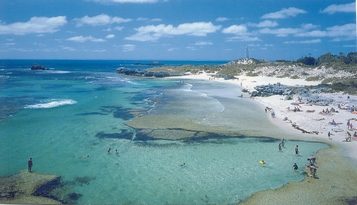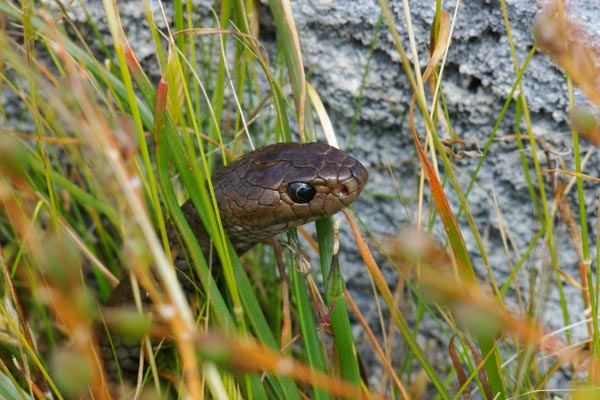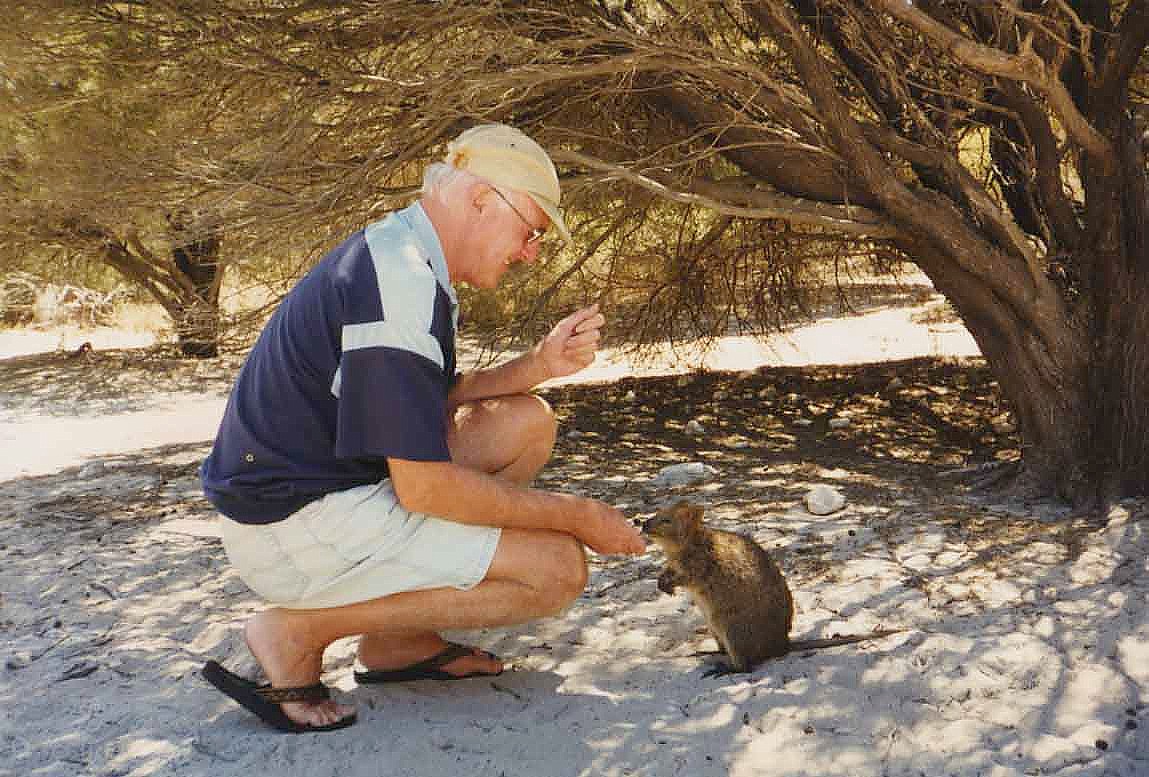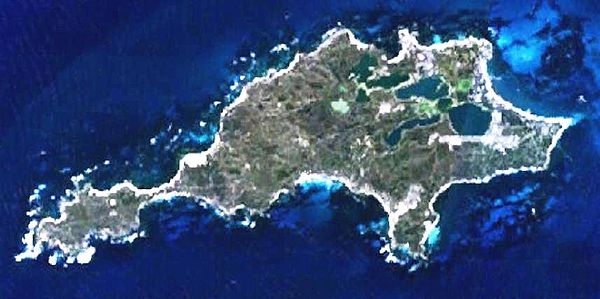A bright moon will drown out fainter meteors...
 The moon will be at last quarter the night of Aug. 13 and it will be at a rather bright waning gibbous phase a night or two earlier, seriously hampering observation of the peak of the Perseids, predicted to occur late on the nights of Aug. 11 and 12.
The moon will be at last quarter the night of Aug. 13 and it will be at a rather bright waning gibbous phase a night or two earlier, seriously hampering observation of the peak of the Perseids, predicted to occur late on the nights of Aug. 11 and 12.
Moonrise on Aug. 11 comes at around 10:20 p.m., while on Aug. 12 it's around 10:50 p.m. The moon will be hovering below and to the left of the Great Square of Pegasus these nights and not all that far from the constellation Perseus, from where the meteors will appear to emanate (hence the name "Perseid").
Square of Pegasus these nights and not all that far from the constellation Perseus, from where the meteors will appear to emanate (hence the name "Perseid").
Perseus, does not begin to climb high up into the northeast sky until around midnight; by dawn it's nearly overhead. But bright moonlight will flood the sky through most of those two key nights and will certainly play havoc with any serious attempts to observe these meteors.
 Every August the skies above the Northern Hemisphere are peppered with little bits of space debris that create the Perseid meteor shower. The debris is tiny, ancient and packs a wallop. Find out why.
Every August the skies above the Northern Hemisphere are peppered with little bits of space debris that create the Perseid meteor shower. The debris is tiny, ancient and packs a wallop. Find out why.
Perseid meteoroids (which is what they're called while in space) are fast. They enter Earth's atmosphere (and are then called meteors) at roughly 133,200 mph (60 kilometers per second) relative to the planet. Most are the size of sand grains; a few are as big as peas or marbles. Almost none hit the ground, but if one does, it's called a meteorite.
Comet Swift-Tuttle, whose debris creates the Perseids, is the largest object known to make repeated passes near Earth. Its nucleus is about 6 miles (9.7 kilometers) across, roughly equal to the object that wiped out the dinosaurs.
 Back in the early 1990s, astronomer Brian Marsden calculated that Swift-Tuttle might actually hit Earth on a future pass. More observations quickly eliminated all possibility of a collision. Marsden found, however, that the comet and Earth might experience a cosmic near miss (about a million miles) in 3044.
Back in the early 1990s, astronomer Brian Marsden calculated that Swift-Tuttle might actually hit Earth on a future pass. More observations quickly eliminated all possibility of a collision. Marsden found, however, that the comet and Earth might experience a cosmic near miss (about a million miles) in 3044.
When a Perseid particle enters the atmosphere, it compresses the air in front of it, which heats up. The meteor, in turn, can be heated to more than 3,000 degrees Fahrenheit (1,650 Celsius). The intense heat vaporizes most meteors, creating what we call shooting stars. Most become visible at around 60 miles up (97 kilometers). Some large meteors splatter, causing a brighter flash called a fireball, and sometimes an explosion that can often be heard from the ground.
Comet Swift-Tuttle has many comet kin. Most originate in the distant Oort cloud, which extends nearly halfway to the next star. The vast majority never visit the inner solar system. But a few, like Swift-Tuttle, have been gravitationally booted onto new trajectories, possibly by the gravity of a passing star long ago.
Perseid meteoroids (and if you've been following along, you know these are things in space before they hit Earth's atmosphere) are anywhere from 60 to 100 miles apart, even at the densest part of the river of debris left behind by comet Swift-Tuttle. That river, in fact, is more like many streams, each deposited during a different pass of the comet on its 130-year orbit around the Sun. The material drifts through space and, in fact, orbits the Sun on roughly the same path as the comet while also spreading out over time.
 As Earth rotates, the side facing the direction of its orbit around the Sun tends to scoop up more space debris. This part of the sky is directly overhead at dawn. For this reason, the Perseids and other meteor showers (and also random shooting stars in general) are usually best viewed in the predawn hours.
As Earth rotates, the side facing the direction of its orbit around the Sun tends to scoop up more space debris. This part of the sky is directly overhead at dawn. For this reason, the Perseids and other meteor showers (and also random shooting stars in general) are usually best viewed in the predawn hours.
Comet Swift-Tuttle was last seen in 1992, an unspectacular pass through the inner solar system that required binoculars to enjoy. Prior to that, it had last been seen in the year it was "discovered" by American astronomers Lewis Swift and Horace Tuttle, 1862. Abraham Lincoln was President.
Swift-Tuttle's orbit has been traced back nearly 2,000 years and is now thought to be the same comet that was observed in 188 AD and possibly even as early as 69 BC.
Swift-Tuttle is due back in 2126 (as you know now, it won't hit us) and astronomers think it might become a spectacular naked-eye comet like Hale-Bopp. If historical calculations are correct (see Fact #9) then the 2126 appearance will mark the comet's 3rd millennium of human observation, assuming someone is in fact around to see it.
 The moon will be at last quarter the night of Aug. 13 and it will be at a rather bright waning gibbous phase a night or two earlier, seriously hampering observation of the peak of the Perseids, predicted to occur late on the nights of Aug. 11 and 12.
The moon will be at last quarter the night of Aug. 13 and it will be at a rather bright waning gibbous phase a night or two earlier, seriously hampering observation of the peak of the Perseids, predicted to occur late on the nights of Aug. 11 and 12.Moonrise on Aug. 11 comes at around 10:20 p.m., while on Aug. 12 it's around 10:50 p.m. The moon will be hovering below and to the left of the Great
 Square of Pegasus these nights and not all that far from the constellation Perseus, from where the meteors will appear to emanate (hence the name "Perseid").
Square of Pegasus these nights and not all that far from the constellation Perseus, from where the meteors will appear to emanate (hence the name "Perseid").Perseus, does not begin to climb high up into the northeast sky until around midnight; by dawn it's nearly overhead. But bright moonlight will flood the sky through most of those two key nights and will certainly play havoc with any serious attempts to observe these meteors.
Facts
 Every August the skies above the Northern Hemisphere are peppered with little bits of space debris that create the Perseid meteor shower. The debris is tiny, ancient and packs a wallop. Find out why.
Every August the skies above the Northern Hemisphere are peppered with little bits of space debris that create the Perseid meteor shower. The debris is tiny, ancient and packs a wallop. Find out why.Perseid meteoroids (which is what they're called while in space) are fast. They enter Earth's atmosphere (and are then called meteors) at roughly 133,200 mph (60 kilometers per second) relative to the planet. Most are the size of sand grains; a few are as big as peas or marbles. Almost none hit the ground, but if one does, it's called a meteorite.
Comet Swift-Tuttle, whose debris creates the Perseids, is the largest object known to make repeated passes near Earth. Its nucleus is about 6 miles (9.7 kilometers) across, roughly equal to the object that wiped out the dinosaurs.
 Back in the early 1990s, astronomer Brian Marsden calculated that Swift-Tuttle might actually hit Earth on a future pass. More observations quickly eliminated all possibility of a collision. Marsden found, however, that the comet and Earth might experience a cosmic near miss (about a million miles) in 3044.
Back in the early 1990s, astronomer Brian Marsden calculated that Swift-Tuttle might actually hit Earth on a future pass. More observations quickly eliminated all possibility of a collision. Marsden found, however, that the comet and Earth might experience a cosmic near miss (about a million miles) in 3044.When a Perseid particle enters the atmosphere, it compresses the air in front of it, which heats up. The meteor, in turn, can be heated to more than 3,000 degrees Fahrenheit (1,650 Celsius). The intense heat vaporizes most meteors, creating what we call shooting stars. Most become visible at around 60 miles up (97 kilometers). Some large meteors splatter, causing a brighter flash called a fireball, and sometimes an explosion that can often be heard from the ground.
Comet Swift-Tuttle has many comet kin. Most originate in the distant Oort cloud, which extends nearly halfway to the next star. The vast majority never visit the inner solar system. But a few, like Swift-Tuttle, have been gravitationally booted onto new trajectories, possibly by the gravity of a passing star long ago.
Perseid meteoroids (and if you've been following along, you know these are things in space before they hit Earth's atmosphere) are anywhere from 60 to 100 miles apart, even at the densest part of the river of debris left behind by comet Swift-Tuttle. That river, in fact, is more like many streams, each deposited during a different pass of the comet on its 130-year orbit around the Sun. The material drifts through space and, in fact, orbits the Sun on roughly the same path as the comet while also spreading out over time.
 As Earth rotates, the side facing the direction of its orbit around the Sun tends to scoop up more space debris. This part of the sky is directly overhead at dawn. For this reason, the Perseids and other meteor showers (and also random shooting stars in general) are usually best viewed in the predawn hours.
As Earth rotates, the side facing the direction of its orbit around the Sun tends to scoop up more space debris. This part of the sky is directly overhead at dawn. For this reason, the Perseids and other meteor showers (and also random shooting stars in general) are usually best viewed in the predawn hours.Comet Swift-Tuttle was last seen in 1992, an unspectacular pass through the inner solar system that required binoculars to enjoy. Prior to that, it had last been seen in the year it was "discovered" by American astronomers Lewis Swift and Horace Tuttle, 1862. Abraham Lincoln was President.
Swift-Tuttle's orbit has been traced back nearly 2,000 years and is now thought to be the same comet that was observed in 188 AD and possibly even as early as 69 BC.
Swift-Tuttle is due back in 2126 (as you know now, it won't hit us) and astronomers think it might become a spectacular naked-eye comet like Hale-Bopp. If historical calculations are correct (see Fact #9) then the 2126 appearance will mark the comet's 3rd millennium of human observation, assuming someone is in fact around to see it.






































































